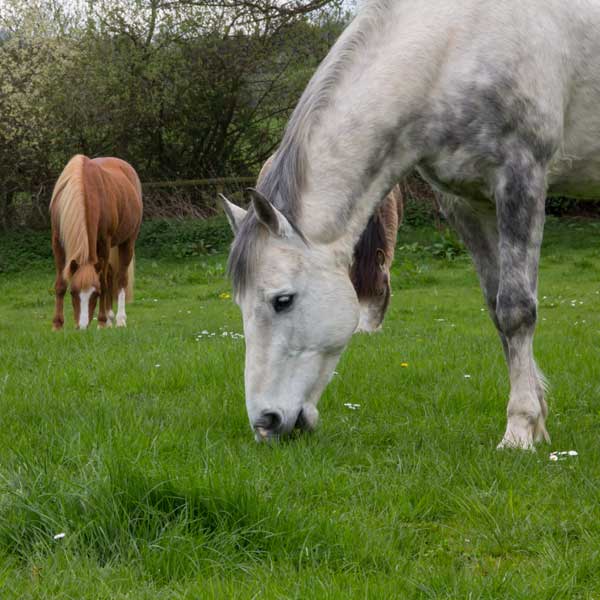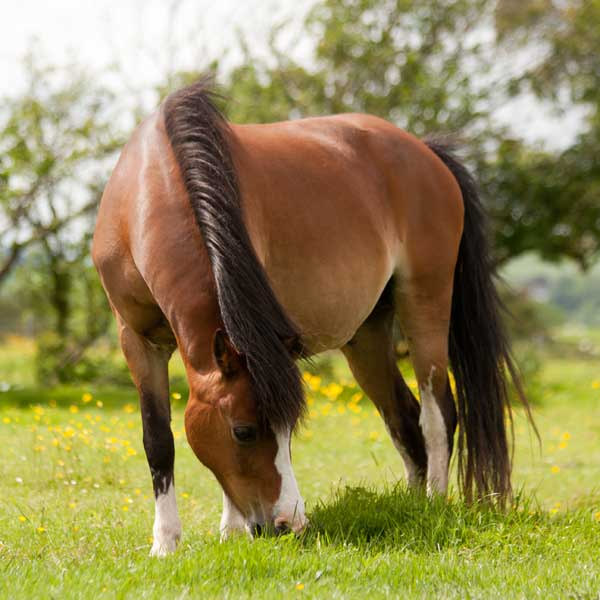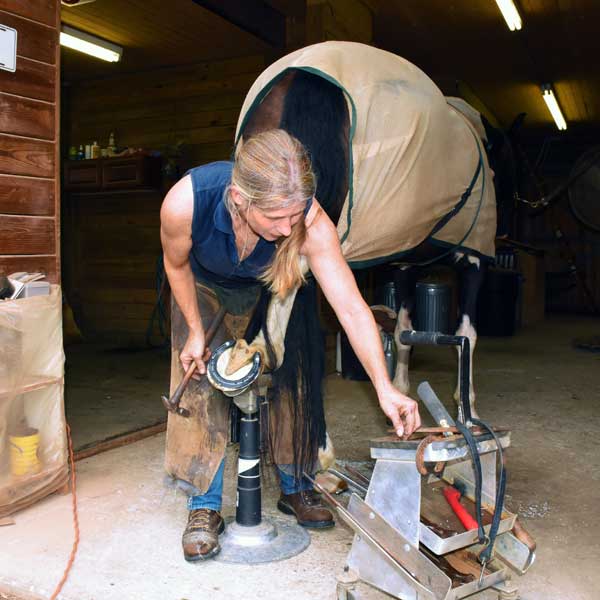It’s important to note that laminitis is a secondary condition. The underlying cause need to be addressed just as the laminitis does. Whatever the cause, the laminae, or soft tissues, inside the hoof begin to inflame. This is quite painful, and can even cause the coffin bone in the hoof to sink, rotate, or shift.
But why does the laminae start to become inflamed and painful? While laminitis can develop for many reasons, there are four general categories of laminitis causes.

Laminitis is a secondary condition, so we must look at the causes of the causes. Photo by Petro Shkvarok.
The Four Main Categories of Laminitis Causes:
- Overload
- Inflammation
- Metabolic Issues
- Trauma
Overload
Supporting limb laminitis is a situation in which a horse has an injury to one leg and the corresponding leg begins to bear abnormally large amounts of weight. As a horse shifts his body weight from the injured leg to the healthy leg, or legs, the amount of blood flow to the hoof is compromised, reducing oxygen and nutrients to the hoof, which can lead to laminitis. Laminitis in these cases typically takes some time to develop, from a few weeks to a few months.
Inflammation
Inflammation can also be a cause of laminitis. This includes many seemingly unrelated situations: from diarrhea and colic, to black walnut toxicity, to a horse that has binged on feed, to a mare with a retained placenta, or even a horse with a fever. The inflammatory response causes a chain reaction of events, some of which are understood and some of which are not, which can trigger laminitis.

Too much sweet spring grass can alter a horse's stomach chemistry. Photo by Jays Photos.
In the case of a sudden overload of feed, or lush spring grass, the starches and non-soluble Carbohydrates (NSC) in these delicious feeds can’t be broken down quickly enough in the horse’s stomach. The NSC’s then travel to the gut, where the horse’s resident microbes have a feast and a half!
This rapid metabolism changes the pH in the gut, killing off some microbes and creating cracks in the gut wall. With the gut wall compromised, the endotoxins from the dying microbes enter the bloodstream which then circulates to the hoof and causes damage.
Metabolic Issues
Metabolic issues are a common partner to laminitis. Equine Metabolic Syndrome (EMS), Cushing’s Disease, and Insulin Resistance all change the way in which a horse metabolizes Carbohydrates, which alters insulin levels. Horses develop metabolic issues for several reasons. A pituitary gland tumor in the brain is responsible for Cushing’s Disease.

A horse with pre-existing metabolic conditions can be at special risk for laminitis. Photo by Jays Photos.
Overweight horses can develop EMS and Insulin Resistance. There are genetic, dietary, and exercise components as well. Regular blood work can alert you to metabolic changes in your horse long before you notice a change in weight and before laminitis develops.
Trauma and Overuse
Trauma and overuse situations can also lead to laminitis in both barefoot and shod horses. A horse that has been worked on hard ground or for extended periods of time can develop what is known as “road founder.”
In road founder cases, the concussion and trauma can disrupt blood flow, tear the laminae, and bruise the hoof, causing laminitis. Hoof trauma can also occur in the unfit horse being asked to work beyond his capabilities, or in the overweight horse.

Farriers address the consequences of laminitis in horse hooves. Photo by Jill Richardson King.
Understanding the causes of laminitis can help you recognize situations in which your horse might be at risk. Because of the painful nature of laminitis, early detection and intervention is critical. Call your veterinarian with any concerns about your horse’s hooves.
Liv Gude is the founder of Pro Equine Grooms, a community devoted to the best in horse care.






